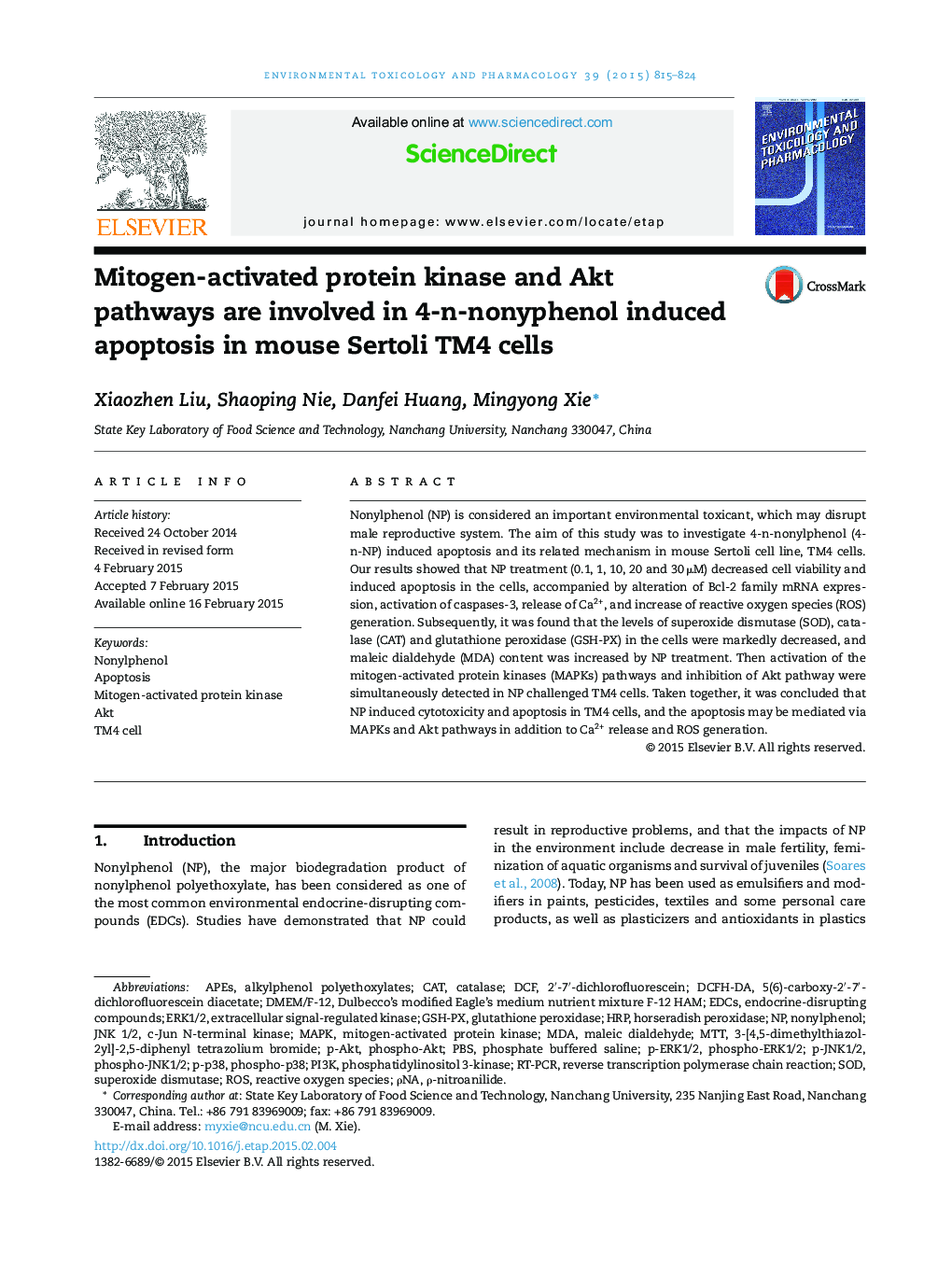| Article ID | Journal | Published Year | Pages | File Type |
|---|---|---|---|---|
| 5848840 | Environmental Toxicology and Pharmacology | 2015 | 10 Pages |
Abstract
Nonylphenol (NP) is considered an important environmental toxicant, which may disrupt male reproductive system. The aim of this study was to investigate 4-n-nonylphenol (4-n-NP) induced apoptosis and its related mechanism in mouse Sertoli cell line, TM4 cells. Our results showed that NP treatment (0.1, 1, 10, 20 and 30 μM) decreased cell viability and induced apoptosis in the cells, accompanied by alteration of Bcl-2 family mRNA expression, activation of caspases-3, release of Ca2+, and increase of reactive oxygen species (ROS) generation. Subsequently, it was found that the levels of superoxide dismutase (SOD), catalase (CAT) and glutathione peroxidase (GSH-PX) in the cells were markedly decreased, and maleic dialdehyde (MDA) content was increased by NP treatment. Then activation of the mitogen-activated protein kinases (MAPKs) pathways and inhibition of Akt pathway were simultaneously detected in NP challenged TM4 cells. Taken together, it was concluded that NP induced cytotoxicity and apoptosis in TM4 cells, and the apoptosis may be mediated via MAPKs and Akt pathways in addition to Ca2+ release and ROS generation.
Keywords
DCFH-DADMEM/F-12MDAp-p382′-7′-dichlorofluoresceinRT-PCRHRPCATDcfPI3KPBSc-Jun N-terminal kinaseEDCsERK1/2GSH-PxMAPKMTTp-Aktp-ERK1/2ROSAktEndocrine-disrupting compoundsApoptosisSODSuperoxide dismutasephospho-AktPhosphate buffered salinePhosphatidylinositol 3-kinasePhospho-p38phospho-Erk1/2ApesNonylphenolreverse transcription polymerase chain reactionHorseradish peroxidasemitogen-activated protein kinaseAlkylphenol polyethoxylatesCatalaseextracellular signal-regulated kinaseglutathione peroxidaseReactive oxygen species
Related Topics
Life Sciences
Environmental Science
Health, Toxicology and Mutagenesis
Authors
Xiaozhen Liu, Shaoping Nie, Danfei Huang, Mingyong Xie,
